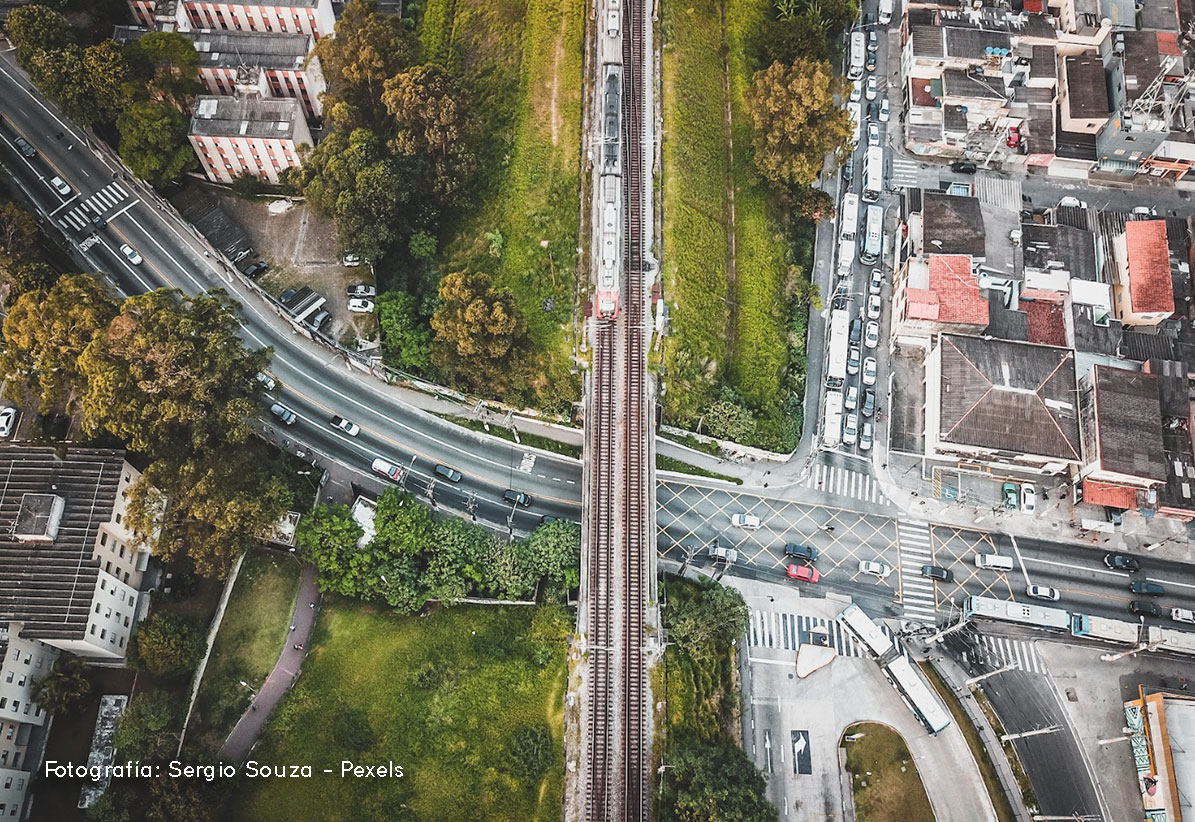
Mobility challenges
Learn about “Mobility challenges” with Ivonne Walls.
Broadly speaking, there are 4 types of mobility: pedestrian mobility, mechanical mobility (bicycles, skates or skateboards), mobility in private, commercial or collective motor vehicles (car, motorcycle, truck, metro) and virtual mobility. Each one of them requires an adequate and special treatment so that they fulfill their function as connectors and points of meeting and social interaction.
The current design trend proposes a hierarchy between the different types of mobility that makes travel more friendly, efficient and safe, giving priority to pedestrians (more vulnerable) and less to motorized vehicles, properly using the main mobility elements in the landscapes that are: the trails, the streets, the bike paths, squares, parks, gardens, rivers, and open spaces such as esplanades or multipurpose spaces. However, the challenge of mobility is not limited to the increase and improvement of the infrastructures necessary for its use, but also to give the user the possibility of adapting their mobility according to their needs. It is about understanding and designing mobility spaces as true living spaces, and not as simple places of passage, which implies understanding the evolution of urban mobility through the means of locomotion and the spaces built or adapted for their circulation.

Mobility hierarchy
IIllustration: Landuum
Changes in the implementation of programs for urban mobility, have made it possible to improve routes in cities and are becoming part of a healthy ecosystem for transiting through them, in a way that meets social objectives and provides clear benefits to communities and people in general.
One of the basic elements of landscape design configuration are free spaces: streets, squares, parks, patios, gardens, vacant lots, among others. These become places of passage, experience, contemplation and meeting. Through these spaces, the circulation and movement of people towards their homes or their work, leisure or recreation activities takes place.
The quality of these spaces is linked to how it is used by the community and, the appropriation of the space by individuals is related to the effective use they can make of it. The appeal of these spaces lies in the quantity and quality of sensory experiences they provide.
The incorporation of mobility, understood as a right of all people, in public policy agendas is essential as part of the challenges of our 21st century cities. It is essential that planning is promoted to achieve sustainable, safe and accessible urban mobility. Mobility, in short, is a facilitator of links between inhabitants, spaces, goods and services.
While a person makes their different move- ments, they recognize their surroundings and reconstruct the landscape. In this way they appropriate space and constitute it into places.
Design tips to improve mobility:
In the first place, alternative mobility must be promoted (pedestrian paths, green corridors, terraces, multi-use circulation routes that link different buildings and service or recreation spaces), taking into account landscape design as part of the mobility experience. This will reinforce the feeling of ownership.
Second, non-motorized transport and public transport must always go hand in hand, since it is practically impossible in a contemporary city to pedal and walk everywhere. Instead, if it is possible to think of short trips on foot or by bicycle and longer trips on public transport. At each end of the public transport journey, the user is required to be a pedestrian or a cyclist, so integration between these modes and public transport is essential.
Finally, it is essential to promote sustainable alternative means of mobility that consider the type of vehicle, its energy source, the existing mobility infrastructure, and the time of the transfers. The public space of daily movements is, ultimately, the product and means of reproduction of social relations. Mobility, the scenario of our day-to-day life, must be a priority on the urban agenda of public policies to direct our cities towards sustainable and more equitable mobility for all.

Delivery man
Photography: artem-podrez – Pexels
Today, more people travel farther and faster than at any other time in history. This mobi- lity has fueled economic and social advances around the world. However, it has come at a cost, compromising safety, health, equity, efficiency, and posing local and global environmental threats.
In the future, a growing world population combined with rapid urbanization will increase the demand for transportation in cities. Public transport, active and shared mobility, and mobility understood as a service, are essential to mitigate the impacts of this demand. A new approach to mobility is needed that includes (but goes beyond the exclusive reliance on the car), a sustainable, efficient, ecological and human mobility that allows us to rediscover ourselves with places and their routes, becoming part of the landscape and integrating ourselves into it.

Rest area
Photography: mart-production – Pexels











